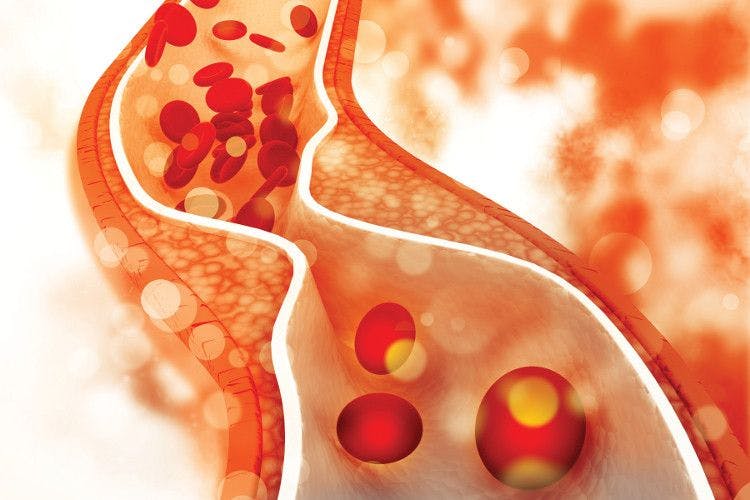Successful packaging for today’s dietary supplement market
Experts in packaging, branding, and design provide tips on effective packaging for today’s dietary supplement market.
Photo © AdobeStock.com/Komarov Andrey

When devising a package for a dietary supplement product, the choices can be overwhelming. What style of package should you choose? What material should it be made of, and how should it be labeled and decorated? And, importantly, does your package act as an extension and ambassador of your brand? Is it a product that customers will connect with, emotionally, right off the shelf or computer screen?
To answer these questions, it helps to hear what those who supply packaging, or who oversee branding and design, see happening in the market. Ahead, we check in with two experts.
The Foundation
Marny Bielefeldt, vice president of marketing for packaging supplier Alpha Packaging (St. Louis), discusses the most popular packaging requests her company is seeing. Her company manufactures plastic bottles and jars for nutritional supplements, sports nutrition powders, personal care products, and niche foods and condiments.
The needs of each category are slightly different, Bielefeldt says. For vitamins and minerals-particularly gummy vitamins, which are increasingly popular and “often brightly colored, interesting shapes”-the choice is often clear packaging made from polyethylene terephthalate (PET). “PET is also easily colored, so for brands that want to establish an identity through colored packaging, transparent PET hues give you the option to color the bottle but still see into the package,” Bielefeldt says.
Meanwhile, sports nutrition marketers often prefer full-body shrink-sleeved bottles. In addition, “Moisture vapor transmission rate (MVTR) is also important for powders, so you often see sports nutrition supplements packaged in high-density polyethylene (HDPE), which has better moisture barrier properties than PET,” she says.
Sustainability is also increasingly requested, with many companies looking for 100% post-consumer resins (PCR), says Bielefeldt, adding that Alpha Packaging makes bottles in food-safe PET or HDPE post-consumer resin for all of the industries it serves.
And, back to the ever-popular gummies, Bielefeldt says that in addition to commanding clear packaging, gummy supplements, as well as chewable formats, also often require wider-mouth bottles. Why? Gummies, in general, are both larger and stickier than tablets or capsules, says Bielefeldt, who explains: “That, in turn, often requires a packaging change to a container with a wider opening that allows the product to be filled faster.”
She continues: “While a lot of pills are packed in bottles with 38-mm neck diameters, gummies usually require a 45-mm or 53-mm neck-and many fillers believe they can be even more efficient with a 63-mm neck diameter. We are currently capitalizing on that market demand by introducing a stock line of PET gummy packaging with 63-mm neck openings that work with child-resistant closures.”
In the personal care sector, Bielefeldt points specifically to hemp cannabidiol (CBD) creams and topicals as influencing packaging. “Creams and topicals are driving a trend toward straight-sided, wide-mouth jars with very minimal, apothecary-styled labels,” she says. “With the higher price points of CBD products, there is also a desire to elevate the brand with direct screen printing on the bottles and jars in lieu of pressure-sensitive labels. This gives the products more of a high-end cosmetic skincare appearance instead of a mass-market look.”
The Branding
Speaking of looks, Yadim Medore has this advice for marketers: “On a package, simplicity and precision of communication are paramount.” Medore is the founder and CEO of strategic consulting, market research, and brand development firm Pure Branding (Northampton, MA).
Also, don’t fall prey to using the industry’s most common message-one that’s so ubiquitous that it doesn’t necessarily register as unique or noteworthy with consumers anymore. Medore explains: “If I could have a nickel for every dietary supplement brand that uses the terms science and nature together in their tagline, I’d be a rich man. Science and nature are the cost of entry for the entire category, and if you build your positioning around this, it’s meaningless.”
Instead, Medore says, “Brands need to go deeper into the brand story-meaning beyond science and nature.”
A brand’s story, as told through its packaging, needs to be carefully crafted. It should be an extension of the brand’s ethos and demonstrate what makes the brand special. For instance, Medore says, in the case of one of Pure Branding’s clients, the personalized nutrition brand Persona, “the packaging is convenient daily packs of the supplements that are right for you, each personalized with your name on it.” He says: “In this case, the packaging is actually an integral part of the brand’s benefit, essential to the overall delivery, amplifying the Persona brand and its commitment to there being ‘only one you.’”
Finally, Medore cautions, in a time when minimalistic, streamlined styling is taking over, “it’s important not to confuse transparency with simplicity, especially when it comes to package design.” Consumers, he says, want the packaging experience to go deeper than a simple, superficial design. They want transparency, and they want the opportunity to know more about the product, the company, and where ingredients come from.
“Transparency is about depth and offers opportunities to ‘dimensionalize’ the story as deep as the participant wants to go, beyond the packaging, on to the website,” Medore says. He points to Pure Branding’s landmark handling of Gaia Herbs’ Meet Your Herbs rebranding campaign years ago, which enabled customers to enter an “Herb ID” on the packaging on the company’s website to learn more about the products’ quality and purity data.

Prinova acquires Aplinova to further increase its footprint in Latin America
April 7th 2025Prinova has recently announced the acquisition of Brazilian ingredients distributor Aplinova, which is a provider of specialty ingredients for a range of market segments that include food, beverage, supplements, and personal care.

.png&w=3840&q=75)

.png&w=3840&q=75)



.png&w=3840&q=75)



.png&w=3840&q=75)
























